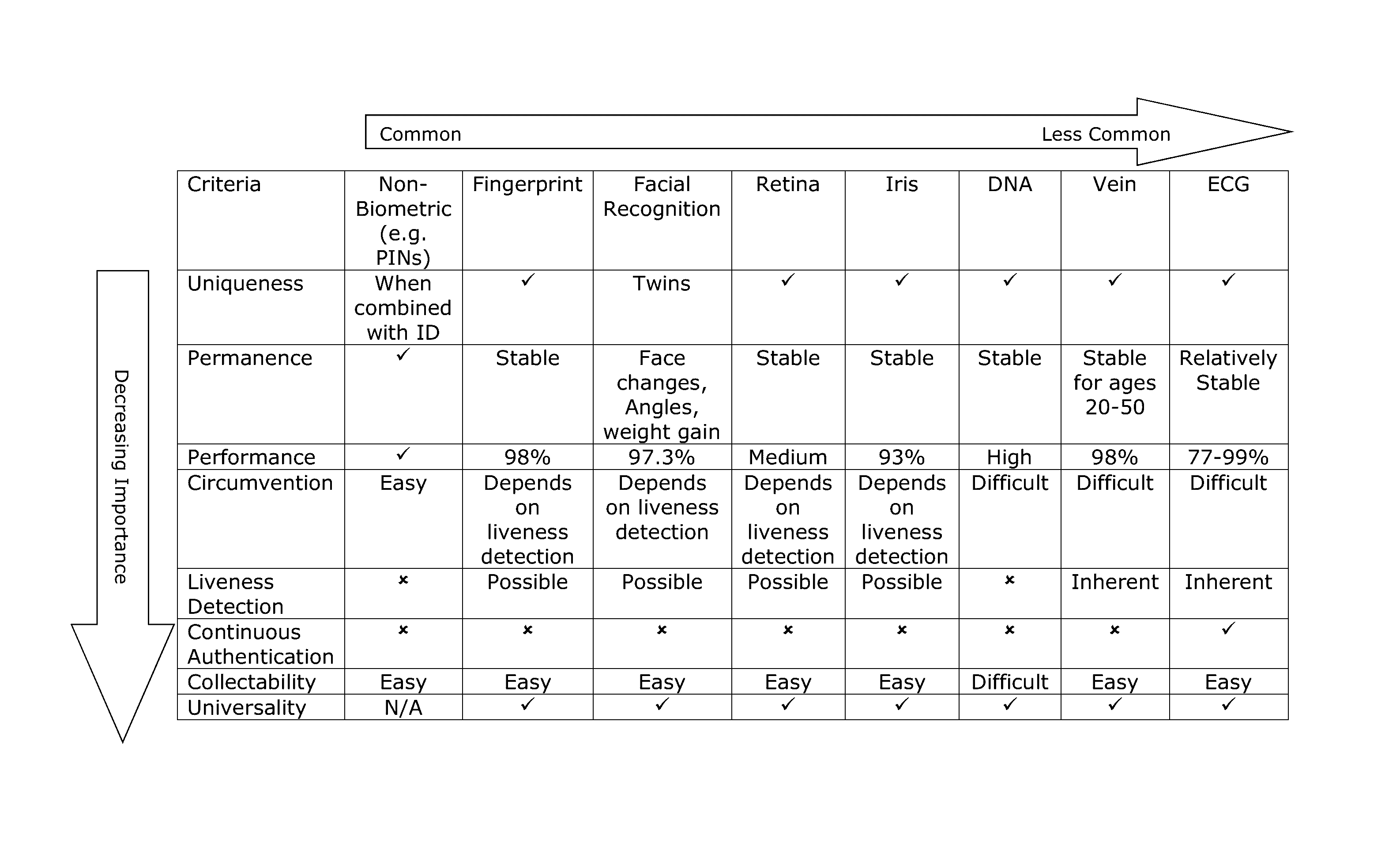System and method for asset authentication and management
- Summary
- Abstract
- Description
- Claims
- Application Information
AI Technical Summary
Benefits of technology
Problems solved by technology
Method used
Image
Examples
example # 1
Example #1
Subject Enrolment Mode
[0128]FIG. 8A depicts an embodiment of an ECG biometric method 800 in enrolment mode. Enrolment is the first data collection procedure in a biometric security system, which establishes the benchmark against which an individual will be identified or authenticated.
[0129]In this embodiment, ECG templates are generated from a previously-authenticated individual, associated with that individual's identity, and stored in an enrolment database. At enrolment stage, the system recognizes the identity of a person, for example, by official identification documents, and verifies the user's identity 802. The system then establishes base ECG templates of the person at various heart beat rates. The system then associates these base templates with the identity of the person, and registers these base templates with the system for use in the identification or authentication process. These enrolled base templates are later used by the system when an unknown individual r...
example # 2
Example #2
Subject Identification Mode
[0136]FIG. 9A depicts an embodiment of an ECG biometric method 900 in subject identification mode. In identification mode, the subject is assumed to be enrolled in the database and the system attempts to determine the identity of the subject based on their biometric modality, in this case, an ECG signal. This may be useful in applications where it is necessary to establish ‘proof of life’ for a person of interest (i.e. asset). In basic identification mode, the subject ECG will have already been recorded 902 and the template generation step 904 described will have also been run.
[0137]In basic identification mode, the generated ECG template is compared to the base ECG templates of each enrolled individual stored in the database. Comparison measures between the recorded ECG template and the enrolled base template for each enrolled subject are calculated. The similarity between the generated ECG template and each of the stored base ECG templates of e...
example # 3
Example #3
Subject Authentication Mode
[0142]FIG. 10A depicts an embodiment of a biometric identification or authentication method 1000 in subject authentication mode. In authentication mode, a subject claims an identity 1002 using a first authentication factor and the system attempts to confirm or deny this claim using a second modality, such as an ECG signal.
[0143]The first authentication factor can take a variety of forms, including entry of a username, password, personal identification number (PIN), or a biometric modality, including a previous authentication using an ECG signal. If a server is used in this mode to authenticate a person, the server stores or has access to the information of the first authentication factor of the person. In an embodiment, the first authentication factor can be obtained at the same time as the ECG signal (for example, a user enters a PIN, and then has to authenticate with an ECG). If the communication device is a cell phone, the first authentication...
PUM
 Login to View More
Login to View More Abstract
Description
Claims
Application Information
 Login to View More
Login to View More - R&D
- Intellectual Property
- Life Sciences
- Materials
- Tech Scout
- Unparalleled Data Quality
- Higher Quality Content
- 60% Fewer Hallucinations
Browse by: Latest US Patents, China's latest patents, Technical Efficacy Thesaurus, Application Domain, Technology Topic, Popular Technical Reports.
© 2025 PatSnap. All rights reserved.Legal|Privacy policy|Modern Slavery Act Transparency Statement|Sitemap|About US| Contact US: help@patsnap.com



